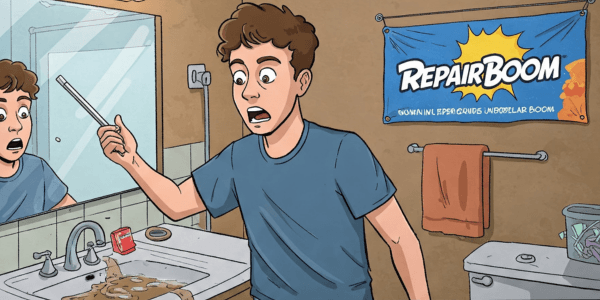Want to learn how to fix a running toilet Without Calling a Plumber?
Table of Contents
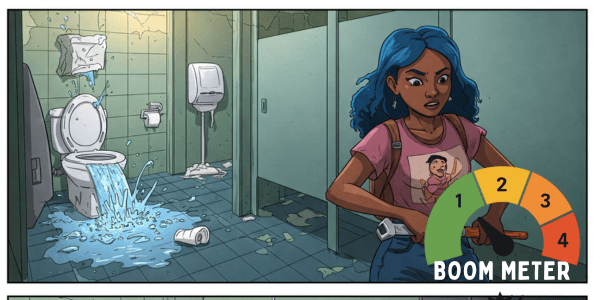
So you want to fix a running toilet? A running toilet that keeps trickling water after flushing can be a constant annoyance, disrupting the quiet of your home with its endless dripping sound, wasting gallons of water each day, raising your utility bill, and potentially causing tension with your landlord if they notice the increased water usage, especially in a rental where you might be responsible for utilities.
That persistent trickle can also be frustrating when you’re trying to sleep or focus, as the sound echoes through the bathroom, and over time, it might even lead to more serious issues like water damage or mold growth if the excess moisture isn’t addressed, making it a problem you’ll want to fix quickly.
In most cases, a running toilet is caused by a simple issue inside the tank, such as a worn-out flapper (the rubber piece that controls water flow) or a misadjusted chain that prevents the flapper from sealing properly, and the good news is that you can fix this in a rental without any plumbing experience, even if you’ve never looked inside a toilet tank before.
This guide will show you how to fix a running toilet without calling a plumber in just 5-10 minutes with no tools, saving you money on your water bill, sparing you the hassle of waiting for a landlord to send a plumber, and avoiding potential fees for a maintenance call, all while keeping your lease intact since this minor adjustment doesn’t involve any permanent changes to the property.
By taking a few minutes to address the issue, you’ll not only restore peace to your bathroom but also gain the confidence to handle small plumbing tasks on your own, empowering you to maintain your rental space effectively.
What to Consider Before fixing a running Toilet
- Toilet Tank Components: Familiarize yourself with the basics inside the tank—mainly the flapper (a rubber piece that lifts when you flush) and the chain connected to it, as these are the most common causes of a running toilet.
- Lease Agreement: Confirm your lease allows minor toilet adjustments—most do, as this is considered basic maintenance, not a repair, but avoid replacing parts like the fill valve without landlord approval (per the “DIY for Renters” book, web ID: 0).
- Safety and Preparation: Have a towel handy in case of minor spills, and be ready to turn off the water supply to avoid any mess; if you’re unsure about any part, you can always stop and contact your landlord.
Recommended supplies | How to fix a running toilet without calling a plumber
- Korky Universal Flapper – Standard Size
- Korky Universal Flapper – 3″ Size
(Links posted are affiliate sponsored Links and purchases directly support our operation. We stand behind the products we recommend)
Step 1: Turn Off the Water and Inspect the Tank
To begin fixing a running toilet, you’ll need to stop the water flow and take a look inside the tank, so locate the shut-off valve behind the toilet, usually a small knob on the wall or floor near the base, and turn it clockwise until it stops—this cuts off the water supply, preventing any mess while you work. Once the water is off, flush the toilet to empty the tank, then carefully lift the tank lid (it’s heavier than it looks, so use both hands) and set it aside on a towel to avoid scratching the floor or tank, giving you a clear view of the parts inside, including the flapper and chain.
Inside the tank, find the flapper, which is a rubber piece at the bottom that lifts when you flush, and the chain attached to it, which connects to the flush handle—check if the chain is tangled, too long, or too short, or if the flapper looks worn, cracked, or warped, as these issues often cause the toilet to keep running by letting water leak into the bowl. How to stop a running toilet starts with this inspection because understanding what’s wrong helps you fix it quickly, and by identifying whether the flapper or chain is the problem, you’ll know exactly what to adjust in the next step, setting you up for a simple solution without any plumbing expertise.
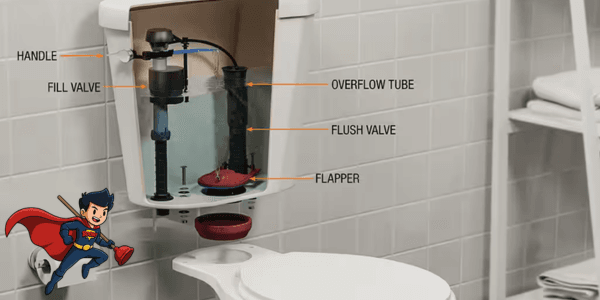
Step 2: Adjust the Flapper or Chain
Now that you’ve identified the issue, the next step in how to stop a running toilet is to adjust the flapper or chain to stop the leak, so if the chain is too long or tangled, unhook it from the flush handle and reattach it to a closer link, ensuring it has just a little slack when the flapper is closed, allowing the flapper to seal properly. If the chain is too short and pulls the flapper up, lengthen it by moving the hook to a farther link, testing by lifting the flapper and letting it drop to see if it closes fully over the drain hole at the bottom of the tank.
If the flapper itself looks worn—cracked, warped, or not sealing tightly—gently remove it by unhooking it from the sides of the overflow tube (the tall pipe it’s attached to), and replace it with a new one of the same size, which you can snap into place in the same spot; most hardware stores carry universal flappers for a few dollars. Stopping a running toilet often comes down to this adjustment because a properly sealing flapper prevents water from leaking into the bowl, and by fine-tuning the chain or replacing the flapper, you’ll likely stop the trickle in just a few minutes, getting you ready to test the fix and restore your toilet’s function.
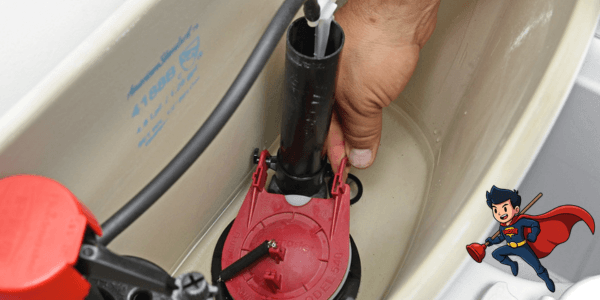
Step 3: Test the Toilet and Check for Leaks
With the flapper or chain adjusted, it’s time to test your work as the final step in how to stop a running toilet, so turn the water supply back on by turning the shut-off valve counterclockwise until it stops, then let the tank fill up, which should take about a minute, and flush the toilet to see if the running stops—listen carefully for any trickling sound after the tank refills. If the toilet still runs, lift the lid again and check if the flapper is sealing tightly or if the chain needs further adjustment, tweaking as needed until the water stops leaking into the bowl, ensuring a complete fix.
Once the running stops, wipe down the tank and surrounding area with a towel to clean up any water splashes from your adjustments, and monitor the toilet over the next day to confirm the fix holds—if you hear trickling again, the issue might be deeper, like a faulty fill valve, so contact your landlord, as that’s a more complex repair they should handle. Stopping a running toilet successfully means you’ve saved water and eliminated the noise, and you can feel confident in your ability to handle this minor plumbing task, but if the problem persists or you notice other issues like a cracked tank, let your landlord know to avoid any liability or further damage.
FAQ: How to Stop a Running Toilet
What if my toilet keeps running after I try to stop a running toilet with the steps?
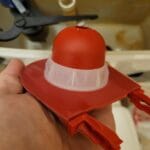
If your toilet keeps running after you try to stop a running toilet with the steps, the flapper might still not be sealing properly, so lift the tank lid again and check if it’s sitting flat over the drain hole, adjusting the chain length if needed for a better toilet tank repair. If the issue persists, the flapper may be too worn for a simple running toilet fix, so replace it with a new one, or if the problem seems deeper, like a faulty fill valve, consider seeking professional help for a plumbing fix to fully stop the toilet from running.
Do I need to replace the entire toilet tank mechanism to stop a running toilet, or can I just do a running toilet fix on the flapper?
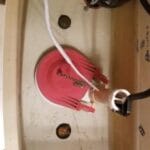
You don’t usually need to replace the entire toilet tank mechanism to stop a running toilet—just focusing on a running toilet fix with the flapper or chain is often enough, as these are the most common causes of a running toilet, as outlined in the guide. If adjusting or replacing the flapper doesn’t work for your toilet tank repair, you might need to inspect other parts like the fill valve, but for most cases, this simple plumbing fix will stop the toilet from running without a full mechanism replacement.
How can I tell if my plumbing fix worked to stop the toilet from running, and will I notice a difference in my water bill?

To confirm your plumbing fix worked to stop the toilet from running, listen for any trickling sounds after the tank refills—if it’s silent, your toilet tank repair was successful, and you’ve effectively stopped the toilet from running, saving water with this running toilet fix. You might also notice a difference in your water bill over the next month, as fixing a running toilet can prevent hundreds of gallons of water waste, making how to stop a running toilet a cost-effective solution for your home.
Running Toilet – Boomtips
- Listen for Silence: After adjusting, wait a minute to ensure you don’t hear water trickling into the bowl, confirming the fix worked.
- Check the Flapper Fit: Press down on the flapper to confirm it seals tightly over the drain hole, preventing any leaks.
- Monitor Water Use: Watch your water bill over the next month to confirm the fix reduces usage, ensuring no hidden leaks remain.

How to replace a smoke alarm battery | Free Guide – RepairBoom
How to unclog a drain in 4 easy steps | Free Guide – RepairBoom
How to unclog a drain in 4 easy steps | Free Guide RepairBoom


